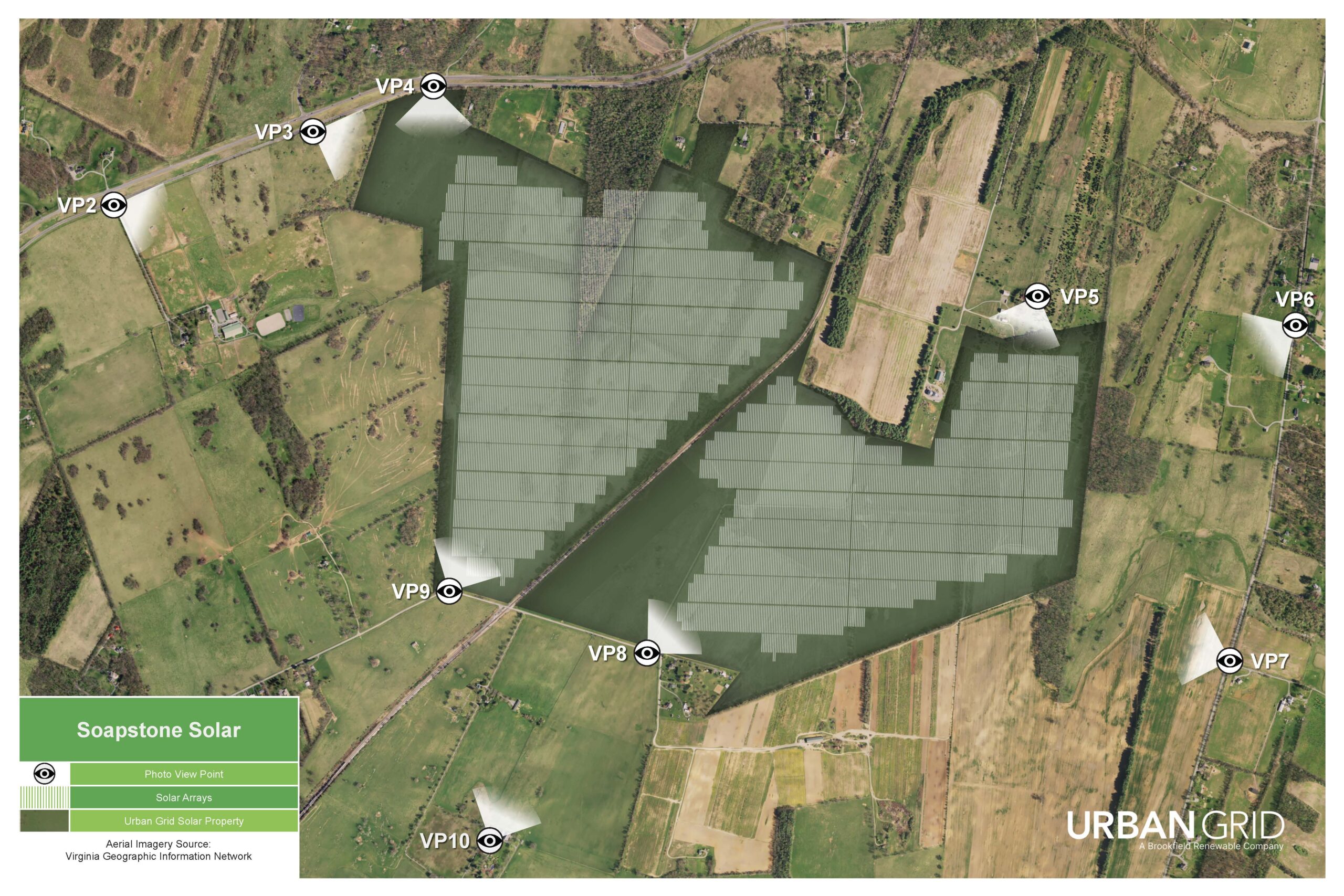FAQs
Frequently Asked Questions
Thank you for your interest in Monarch Solar. We recently toured the project site with Brunswick County Planners and they asked a number of great questions captured on the video below.
If your question is not covered in the video or in the additional questions below it, please submit a question on the contact page and we will be sure to respond.
Renderings of Soapstone Solar from Roadways
Soapstone Solar on Audley Farm was carefully sited to minimize or completely obscure any views of the project from roadways.

Take a Video Site Tour of Monarch Solar . . .
PROJECT LOCATION
The Monarch Solar project will be situated 100′ from public roads and buffered by existing mature pine trees. The project is well out of public view sited in a remote area of the county on a timber farm.
The land is owned by a combination of private land owners and a commercial timber company.
SAFETY & OPERATIONS
Solar panels, also known as photovoltaic modules (PV modules), work by turning sunlight into direct current (DC) electricity. These panels are supported by some type of racking structure that can be fixed, or it may rotate on an axis. Solar panels are paired with inverters that convert the DC electricity into a more useable form of electricity known as alternating current (AC.) The AC electricity then passes through a transformer to ensure that the power is the appropriate voltage before it is sent to the electric grid.
When the solar facility is no longer efficient, the system will be decommissioned and the equipment removed, recycling everything that can be recycled, and returning the land to the condition in which it existed prior to the installation of the solar project. Solar has a minimal impact on the land, unlike fossil fuel power plants. When the project is removed, the land is returned to essentially its original state. Many landowners see leasing land for utility-scale solar projects as a form of land banking, as it has minimal long-term impact on the value of the land. Urban Grid assumes all responsibility for decommissioning and places a secure bond with the county in the event that project ownership should change in the future. This means that the county and its residents are NOT responsible for any costs for the removal of a project at the end of its useful life.
Solar panels do not produce noise, but the inverters that change the current of electricity from DC to AC do produce a slight hum that is not audible past the property boundaries. Solar projects are considered quiet neighbors.
Urban Grid utilizes the best available Photovoltaic solar (PV) panel technology for all of our utility-scale projects. These panels are dark in color and are treated with an anti-reflective coating. The purpose of solar panels is to absorb as much sunlight as possible to produce energy efficiently so the point of the panels is to be as minimally reflective as possible. Solar panels are generally less reflective than windows and have been approved by the Federal Aviation Administration for installation on and around airports across the country.
ENVIRONMENT & WILDLIFE
Utility-scale solar projects do not increase runoff and may actually improve soil and water quality. Stormwater management plans are a required part of the solar development process. These plans are prepared by professional engineers to ensure that projects do not contribute to erosion or flooding.
We follow the strict requirements of the Virginia Department of Environmental Quality to ensure our projects meet and often exceed guidelines to protect surrounding waterways.
Once operational, the use of perennial ground cover and elimination of annual tillage, irrigation, and fertilizer (in the case of farmland) allows the soil to absorb water and rejuvenate during the life of the project. A solar project has maximum ground permeability and is much better in terms of stormwater runoff than most other types of development.
Solar farms do not pose a threat to wildlife. Wildlife studies are an important part of the development process — trained experts study proposed sites to ensure that utility-scale solar development minimizes impact to wildlife. Solar projects can also provide important habitat for birds and pollinators like bees and butterflies.